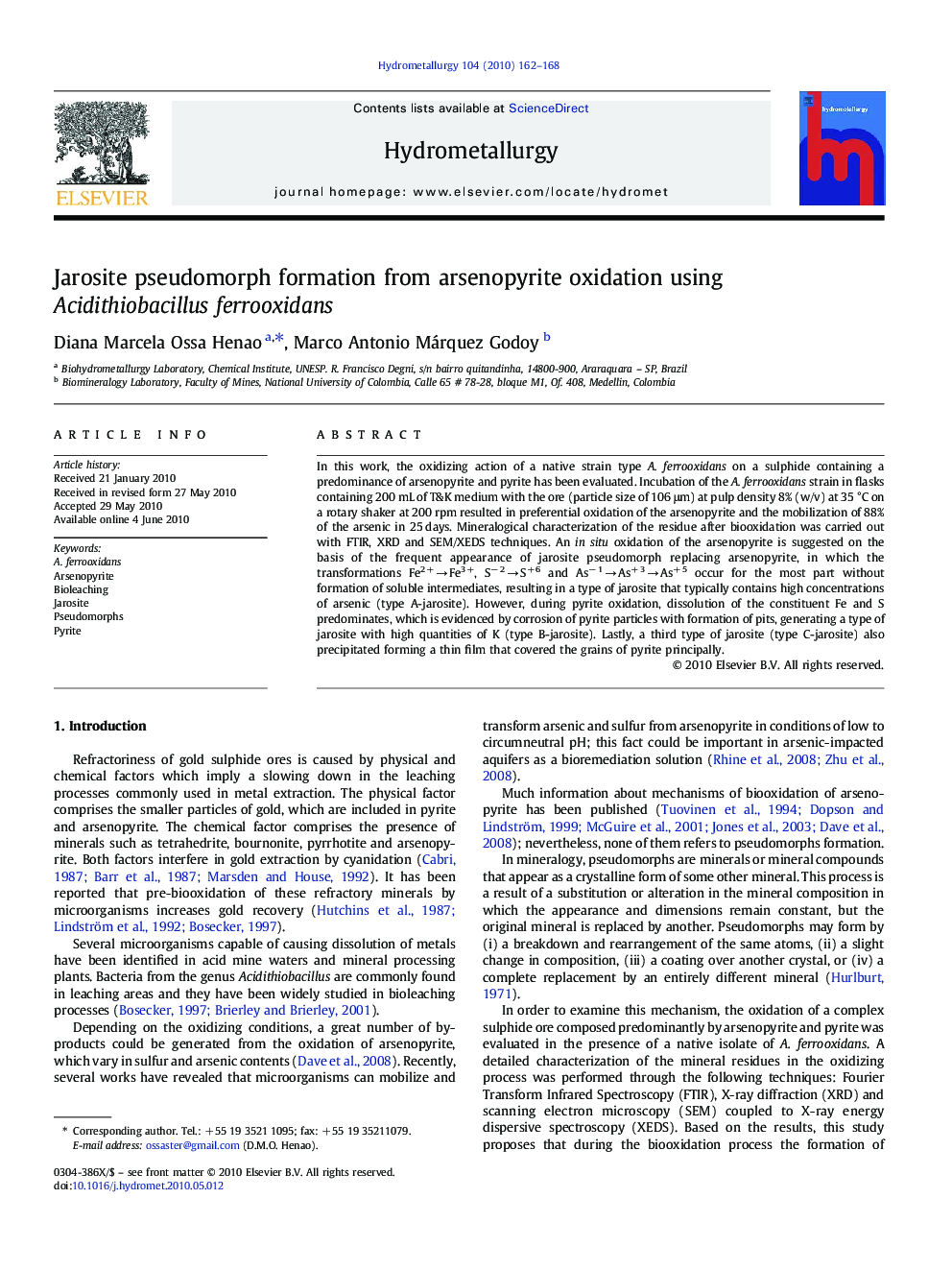| Article ID | Journal | Published Year | Pages | File Type |
|---|---|---|---|---|
| 212827 | Hydrometallurgy | 2010 | 7 Pages |
In this work, the oxidizing action of a native strain type A. ferrooxidans on a sulphide containing a predominance of arsenopyrite and pyrite has been evaluated. Incubation of the A. ferrooxidans strain in flasks containing 200 mL of T&K medium with the ore (particle size of 106 μm) at pulp density 8% (w/v) at 35 °C on a rotary shaker at 200 rpm resulted in preferential oxidation of the arsenopyrite and the mobilization of 88% of the arsenic in 25 days. Mineralogical characterization of the residue after biooxidation was carried out with FTIR, XRD and SEM/XEDS techniques. An in situ oxidation of the arsenopyrite is suggested on the basis of the frequent appearance of jarosite pseudomorph replacing arsenopyrite, in which the transformations Fe2+ → Fe3+, S− 2 → S+ 6 and As− 1 → As+ 3 → As+ 5 occur for the most part without formation of soluble intermediates, resulting in a type of jarosite that typically contains high concentrations of arsenic (type A-jarosite). However, during pyrite oxidation, dissolution of the constituent Fe and S predominates, which is evidenced by corrosion of pyrite particles with formation of pits, generating a type of jarosite with high quantities of K (type B-jarosite). Lastly, a third type of jarosite (type C-jarosite) also precipitated forming a thin film that covered the grains of pyrite principally.
